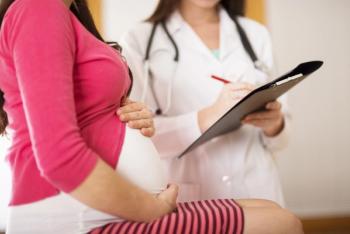
Primary care providers key to tobacco prevention in teens
A recent report emphasizes the work of primary care physicians in preventing tobacco use in teens, noting that prevention is the best tool to combat smoking initiation.
Primary care doctors are the front line when it comes to the fight against tobacco use. Frequent interactions throughout childhood and adolescence make these providers the ideal resource for education and counseling on tobacco avoidance, according to an updated recommendation from the US Preventive Services Task Force (USPSTF).
The USPSTF outlined its updated recommendations in a series of reports published in April in JAMA. These reports include an updated
The evidence report, penned by Shelley Selph, MD, MPH, of the Oregon Health and Science University's Pacific Northwest Evidence-based Practice Center in Portland examined 24 randomized clinical trials with more than 44,000 participants. In 13 of the trials, an 18% drop in the risk of smoking initiation was attributed to behavioral interventions by clinicians. On the other hand, the study found no significant change in smoking cessation efforts after behavioral interventions—but also no improvement after pharmacologic interventions using nicotine replacement or bupropion.
This evidence led the task force to confirm earlier recommendations that primary care physicians should focus on behavioral interventions as a prevention tool to keep children and teenagers from using tobacco in the first place rather than trying to get them to stop.
Tobacco is the top cause of preventable death in the United States, with about 480,000 deaths each year are attributed to tobacco use among adults, according to the evidence report. In children and adolescents, an estimated 1600 adolescents aged 12 to 17 smoke their first cigarette each day, and 5.6 million teenagers will eventually die from an illness related to smoking. Increasingly, tobacco use in teenagers is moving from conventional cigarettes to electronic cigarettes (e-cigarettes).
“Pediatricians cannot ignore the use or potential use of any tobacco product in their patients, due to the risk of significant harms associated with such use,” says Selph.
The evidence report was used to update the task force’s recommendation, which was last reviewed in 2013. Changes to the task force’s recommendations include the addition of e-cigarettes to the tobacco products addressed in the recommendation. The USPSTF also concluded that there isn’t enough evidence to make a clear recommendation on tobacco cessation methods in children and adolescents. More research is needed to identify the best methods to help children and teens stop using tobacco products.
References
1. Sargent JD, Unger JB, Leventhal AM. Recommendations from the USPSTF for prevention and cessation of tobacco use in children and adolescents. JAMA. 2020:323(16):1563–1564. doi:10.1001/jama.2019.22312.
2. Selph S, Patnode C, Bailey SR, Pappas M, Stoner R, Chou R. Primary care–relevant interventions for tobacco and nicotine use prevention and cessation in children and adolescents: updated evidence report and systematic review for the US Preventive Services Task Force. JAMA. 2020:323(16):1599–1608. doi:10.1001/jama.2020.3332.
3. US Preventive Services Task Force. Primary care interventions for prevention and cessation of tobacco use in children and adolescents: US Preventive Services Task Force recommendation statement. JAMA. 2020:323(16):1590–1598. doi:10.1001/jama.2020.4679.
Newsletter
Access practical, evidence-based guidance to support better care for our youngest patients. Join our email list for the latest clinical updates.

![Jodi Gilman, PhD, on cumulative prenatal adversity linked to adolescent mental health risk Document Jodi Gilman, PhD, on cumulative prenatal adversity linked to adolescent mental health risk Live? Do you want this document to be visible online? Scheduled Publishing Exclude From Home Page Do you want this document to be excluded from home page? Exclude From Infinite Scroll Do you want this document to be excluded from infinite scroll? Disable Related Content Remove related content from bottom of article. Password Protection? Do you want this gate this document? (If so, switch this on, set 'Live?' status on and specify password below.) Hide Comments [Experiment] Comments are visible by default. To hide them for this article toggle this switch to the on position. Show Social Share Buttons? Do you want this document to have the social share icons? Healthcare Professional Check Is Gated [DEV Only]Do you want to require login to view this? Password Password required to pass the gating above. Title Jodi Gilman, PhD, on cumulative prenatal adversity linked to adolescent mental health risk URL Unique identifier for this document. (Do not change after publishing) jodi-gilman-phd-on-cumulative-prenatal-adversity-linked-to-adolescent-mental-health-risk Canonical URL Canonical URL for this document. Publish Date Documents are usually sorted DESC using this field. NOTE: latency may cause article to publish a few minutes ahead of prepared time 2026-01-19 11:52 Updated On Add an updated date if the article has been updated after the initial publish date. e.g. 2026-01-19 11:50 Article Type News Display Label Author Jodi Gilman, Phd > Gilman, Jodi Author Fact Check Assign authors who fact checked the article. Morgan Ebert, Managing Editor > Ebert, Morgan Content Category Articles Content Placement News > Mental, Behavioral and Development Health > Clinical AD Targeting Group Put the value only when the document group is sold and require targeting enforcement. Type to search Document Group Mapping Now you can assign multiple document group to an article. No items Content Group Assign a content group to this document for ad targeting. Type to search Issue Association Please choose an issue to associate this document Type to search Issue Section Please choose a section/department head if it exists Type to search Filter Please choose a filter if required Type to search Page Number Keywords (SEO) Enter tag and press ENTER… Display summary on top of article? Do you want display summary on top of article? Summary Description for Google and other search engines; AI generated summary currently not supporting videos. Cumulative prenatal adversities were linked to higher adolescent mental health risk, highlighting the importance of prenatal history and early clinical monitoring. Abstract Body *********************************************************************************************************** Please include at least one image/figure in the article body for SEO and compliance purposes ***********************************************************************************************************](https://cdn.sanity.io/images/0vv8moc6/contpeds/e6097cb5e6d6c028c0d4e9efd069e69fdab6d00b-1200x628.png?w=350&fit=crop&auto=format)






